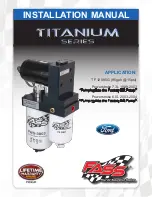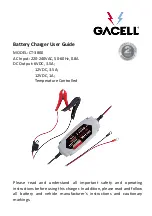
Useful information
i
This Operator's Manual describes all
models and all standard and optional
equipment of your vehicle available at the
time of publication of the Operator's
Manual. Country-specific differences are
possible. Please note that your vehicle may
not be equipped with all features
described. This also applies to safety-
related systems and functions.
i
Read the information on qualified
Stowage areas
Loading guidelines
G
WARNING
Always fasten items being carried as securely
as possible. Use cargo tie-down rings and
fastening materials appropriate for the weight
and size of the load.
In an accident, during hard braking or sudden
maneuvers, loose items will be thrown around
inside the vehicle. This can cause injury to
vehicle occupants unless the items are
securely fastened in the vehicle.
To help avoid personal injury during a collision
or sudden maneuver, exercise care when
transporting cargo. Do not pile luggage or
cargo higher than the seat backrests.
The cargo compartment is the preferred place
to carry objects. Always use cargo tie-down
rings, and if so equipped, always use the cargo
net when transporting cargo.
Never drive a vehicle with the tailgate open.
Deadly carbon monoxide (CO) gases may
enter vehicle interior resulting in
unconsciousness and death.
The gross vehicle weight (GVW) is the vehicle
weight including fuel, vehicle tool kit, spare
wheel, installed accessories, vehicle
occupants and luggage/cargo.
The gross load limit and the gross vehicle
weight rating (GVWR) for your vehicle must
never be exceeded. The load limit and GVWR
are given on the vehicle identification plate
found on the B-pillar of the driver's door
(
The load must also be distributed so that the
weight on each axle never exceeds the gross
axle weight rating (GAWR) for the front and
rear axles. The relevant GVWR and GAWR
information can be found on the vehicle
identification plate on the B-pillar of the
driver's side (
You will find further information in the
"Loading the vehicle" section (
The handling characteristics of a laden
vehicle are dependent on the distribution of
the load within the vehicle. For this reason,
you should observe the following notes when
transporting a load:
R
when transporting a load, never exceed the
maximum permissible gross vehicle weight
or the gross axle weight rating of the
vehicle (including occupants).
R
position heavy loads as far forwards as
possible and as low down in the cargo
compartment as possible.
R
the load must not protrude above the upper
edge of the seat backrests.
R
always place the load against the rear or
front seat backrests. Make sure that the
seat backrests are securely locked into
place.
R
hook in the cargo net when loading.
R
always place the load behind unoccupied
seats if possible.
R
secure the load with sufficiently strong and
wear-resistant tie-downs. Pad sharp edges
for protection.
330
Stowage areas
Stowage and features
Summary of Contents for 2013 GL X166
Page 1: ...GL Operator s Manual Nur f r internen Gebrauch For internal use only...
Page 4: ......
Page 32: ...30...
Page 80: ...78...
Page 158: ...156...
Page 331: ...Useful information 330 Stowage areas 330 Features 338 329 Stowage and features...
Page 360: ...358...
Page 376: ...374...
Page 432: ...430...
Page 446: ...444...
















































